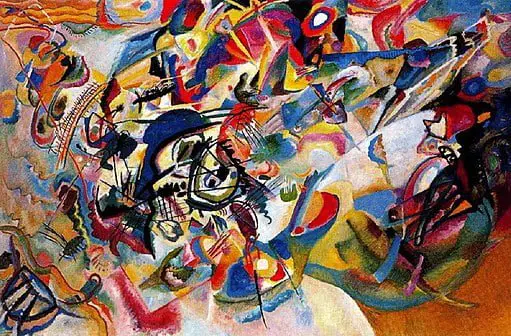Abstract art is a genre that has long been celebrated for its ability to elicit an emotional response from viewers. While some may argue that it lacks the traditional elements of realism, it is this very quality that gives it the power to transport us to another world. Exploring the world of abstract art can be an exciting and thought-provoking journey that can inspire your imagination and enrich your understanding of art as a whole. In this article, we will explore 10 masterpieces that have stood the test of time and continue to mesmerize art lovers around the world.
Discovering the World of Abstract Art
Before we delve into the world of abstract art, it is important to understand what it is and what makes it unique. Abstract art is a broad term that encompasses a wide range of styles, techniques, and forms. At its core, abstract art is about using colors, shapes, and textures to evoke emotions rather than depicting reality. This genre often allows artists to express their innermost thoughts and emotions in a way that is not possible with traditional art forms.
can be traced back to the late 19th and early 20th centuries, when artists began to experiment with non-representational forms. Some of the most significant pioneers of abstract art include Wassily Kandinsky, Kazimir Malevich, and Piet Mondrian. These artists challenged traditional notions of art and paved the way for a new form of expression that continues to evolve to this day.
Top 10 Masterpieces to Inspire Your Imagination
“No. 61 (Rust and Blue)” by Mark Rothko – This painting is a masterclass in color and texture. Rothko’s use of deep blues and rusty reds create a sense of depth and emotion that is hard to describe.
“Black and White” by Kazimir Malevich – This abstract painting is a true classic. Malevich’s use of geometric shapes and stark contrasts create a sense of tension and dynamism that is still relevant today.
“Composition VII” by Wassily Kandinsky – Kandinsky is often considered the father of abstract art, and this painting showcases his mastery. The use of bold colors, shapes, and lines creates a sense of movement and energy.
“Number 1 (Lavender Mist)” by Jackson Pollock – Pollock’s drip paintings are some of the most recognizable works in the world of abstract art. This particular painting is a stunning example of his signature style.
“Homage to the Square: Glow” by Josef Albers – Albers’ “Homage to the Square” series is a masterclass in color theory. This painting, in particular, uses warm tones to create a sense of radiance and luminosity.
“Orange, Red, Yellow” by Mark Rothko – Another masterpiece by Rothko, this painting uses bold, warm colors to create a sense of intensity and warmth.
“Composition VIII” by Wassily Kandinsky – This painting is a symphony of color and form. Kandinsky’s use of shapes and lines creates a sense of harmony and balance that is truly awe-inspiring.
“Blue Poles” by Jackson Pollock – This painting, also known as “Number 11,” is a prime example of Pollock’s drip technique. The use of vibrant blues and bold lines create a sense of movement and depth.
“Convergence” by Jackson Pollock – This painting is a true tour-de-force. Pollock’s use of color, texture, and movement creates a sense of chaos and order that is hard to describe.
“Broadway Boogie Woogie” by Piet Mondrian – Mondrian’s use of primary colors and geometric shapes creates a sense of rhythm and movement that is reminiscent of the bustling energy of New York City.
Exploring the world of abstract art is a journey that can lead to a deeper understanding of the power of art to move us and inspire us in ways that we never thought possible. The masterpieces listed above are just a small sampling of the vast and diverse world of abstract art. Whether you are a seasoned art lover or a curious newcomer, there is something in this genre for everyone. So go ahead and explore the world of abstract art and see where it takes you.
Image credit
Wassily Kandinsky, Public domain, via Wikimedia Commons

